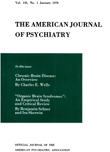Hypnosis and related clinical behavior
Abstract
The essential aspect in the experience of the hypnotized person is the altered or distorted perception that is suggested to him. Not all people are capable of the experience, but it is possible that spontaneous distortions occur in those with high hypnotizability. These distortions are frequently experienced as frightening symptoms. The author draws attention to the similarity between hysterical symptoms and events in hypnosis and to the high hypnotic responsivity in hysterical subjects reported in the clinical literature of the nineteenth century. Phobic patients have relatively high hypnotic responsivity. The author believes that it is sometimes possible to predict hypnotizability from clinical behavior, and that hypnotic responsivity can be utilized in psychodynamically sensitive therapy to teach such patients that they can learn to gain control of their symptoms.
Access content
To read the fulltext, please use one of the options below to sign in or purchase access.- Personal login
- Institutional Login
- Sign in via OpenAthens
- Register for access
-
Please login/register if you wish to pair your device and check access availability.
Not a subscriber?
PsychiatryOnline subscription options offer access to the DSM-5 library, books, journals, CME, and patient resources. This all-in-one virtual library provides psychiatrists and mental health professionals with key resources for diagnosis, treatment, research, and professional development.
Need more help? PsychiatryOnline Customer Service may be reached by emailing [email protected] or by calling 800-368-5777 (in the U.S.) or 703-907-7322 (outside the U.S.).



